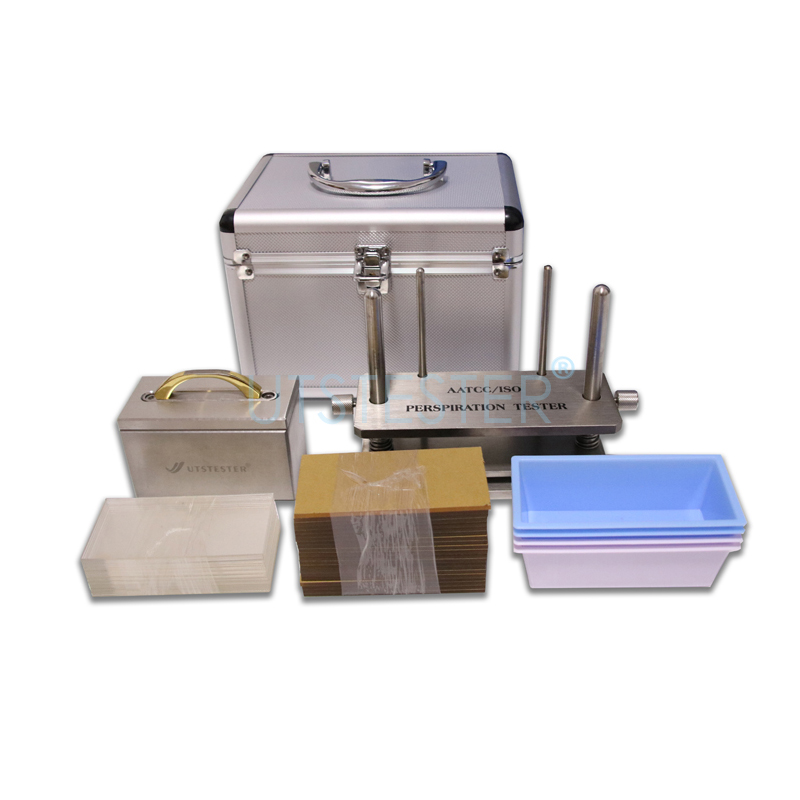 +86 152 6060 5085
+86 152 6060 5085
 +86 152 6060 5085
+86 152 6060 5085
Blog
Catalog
Latest Blog
The perspiration color fastness tester is used to measure the color fastness of various colored and colored textiles to decolorization by sweat, sea water, saliva, and distilled water. It is suitable for testing the color fastness of various textile materials and textiles to perspiration. Customers in need are welcome in time Call for enquiry.
Applicable standards:
Standard sweat-AATCC 15, EN ISO 105 Part E04, DIN 54020
Seawater-AATCC 107, EN ISO 105 Part E02, DIN 54007
Clear water-AATCC 106, EN ISO 105 Part E01, DIN 54006
Immersed in PVC-ISO 105 Part X10, DIN 54072
Weight is 3.63kg (8lb), compliant with AATCC standards
Weight is 4.10kg (9lb), in line with ISO standards
Test trial:
Put the textile sample and the specified backing fabric together, after treatment with the test solution, remove the test solution, place it between the lower plate and the bottom plate, put a weight according to the specified pressure, place it at the specified temperature for a certain period of time, and then place it After the sample and the backing fabric are dried respectively, observe the color change.
experiment method:
1. Put a combined sample into the acid and alkali test solution with a liquor ratio of 50:1 (the specific test solution is prepared according to the standard requirements) to make it completely wet, and then place it at room temperature for 30 minutes. If necessary, Press and turn to ensure that the test solution penetrates well and evenly. Take out the sample, pour out the remaining liquid, and use two glass rods to clamp the excess test solution on the combined sample, or place the combined sample on On the sample plate, use another sample plate to scrape off excess test liquid, sandwich the sample between the two sample plates, use the same steps to place other combined samples, and then put the sample under pressure. The equipment used for testing alkali and acid should be separated.
2. Place the two sets of acid and alkali instruments with combined samples in a constant temperature box and place them at a temperature of 37°C ± 2°C for 4 hours.
3. Remove all sutures on the combined sample except one short side, unfold the combined sample, and hang it in the air with a temperature not exceeding 60°C to dry.
4. Use the gray sample card to evaluate the discoloration of each sample and the staining of the side of the backing fabric in contact with the sample.

Email: hello@utstesters.com
Direct: + 86 152 6060 5085
Tel: +86-596-7686689
Web: www.utstesters.com